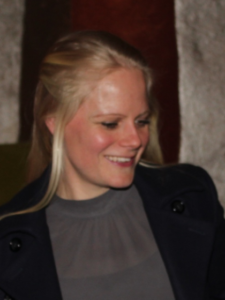In “past, present, future”, we ask clinical or academic experts to reflect on selected Sports & Exercise Medicine topics. Today Anne Benjaminse and Alli Gokeler on Motor Learning in ACL Injury Prevention and Rehabilitation.


Tell us more about yourself.
My name is Anne Benjaminse. I obtained a bachelor’s degree in physical therapy at the Hanze University Groningen. Throughout my studies, my main interest was in sports injuries. At the time, the options to specialize in this were limited in The Netherlands. Therefore, I pursued a master’s degree in Sports Medicine at the University of Pittsburgh, USA. In line with my background, my PhD project focused on motor learning and ACL injury prevention. I now work as a postdoctoral researcher at the Center for Human Movement Sciences at the University of Groningen in the Netherlands since 2015, continuing to unravel how motor learning can contribute to ACL injury prevention.
And I am Alli Gokeler. I worked as a sports physiotherapist in the USA and Germany, mainly seeing patients with knee injuries. While working in Germany, I had an opportunity to participate in gait analysis research. This was the start of combing clinical work with academia. I’m now a post-doctoral researcher at the Exercise Science and Neuroscience Unit, Department Exercise and Health, University of Paderborn, Amsterdam Collaboration for Health and Safety in Sports, Department of Public and Occupational Health, Amsterdam Movement Sciences, VU University Medical Center and clinical head knowledge transfer at OCON Sports Medicine Clinic, Hengelo, The Netherlands.
What was hip and happening 10 years ago?
Ten years ago, we were only beginning to realise the role of motor learning in ACL injury prevention and rehabilitation. We wanted to understand why we saw certain movement strategies and knew we needed to better teach our athletes to optimise their movement in the sport-specific context. ACL injury prevention and rehab programs were primarily based on explicit instructions. Although effective while doing them, as soon as an athlete stops the exercises, the effects dissipate. In the motor learning domain, learning is defined as improved performance after practice that is sustained over time. Compare learning French in high school and riding your bicycle. Which one are you still able to do?
What are we doing now?
We’ve gained a lot of knowledge from more than 10 years of research. Luckily, our ideas are picked up by more and more researchers and professionals working with healthy and/or injured athletes. However, we have just begun the unravel the complexity of human behaviour in sports environments. We’re working on non-linear approaches using more ecologically valid conditions to better understand how we can analyse and improve human movement in the sport-specific environment. In addition, we look at the role of neurocognitive functions regarding injury mechanisms and transfer that knowledge to the development of screening and injury prevention.
Where do you think we will be 10 years from now?
We may need to work on a paradigm shift merging group analysis with a complex system approach. For sure generic injury prevention programs would still be critical. Still, we feel that more individual-based ACL injury prevention programs need to be developed based on new risk profiling and monitoring methods. In addition, qualitative research will play a more prominent role, much needed if we want to better grasp the complexity of ACL injuries and how we can improve the uptake of ACL injury prevention programs.
Would you like to learn more on this topic? Here is a selection of studies on ‘Anterior Cruciate Ligament Injury’ published in our journal